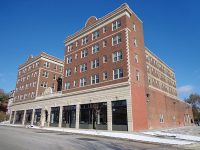Moisture Management
By Jessica Gitto
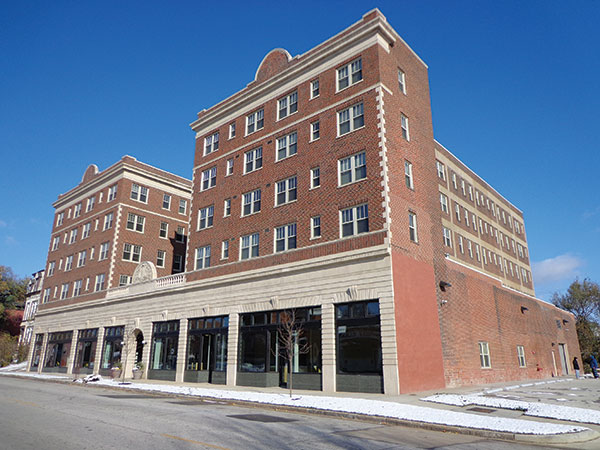
Masonry restoration and preservation are very important to the life of a building. Although building exteriors are made of durable and resilient materials such as brick or stone, they are consistently subject to weather, pollutants, ground movement and moisture. If masonry distress is ignored or not prevented properly, a building’s structural stability could be compromised.
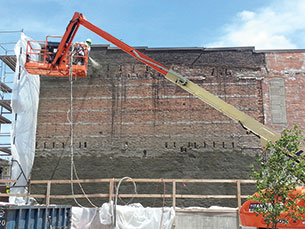
Properly waterproofing a structure’s facade plays an important role in preserving every aspect of a structure’s construction. Knowing which waterproofing coverage to specify for a structure is more than just a science; it’s an art form that is best left to an experienced professional to determine.
Water is moved through a structure via any number of forces, including: hydrostatic pressure, capillary action, wind/air currents, surface tension and natural gravity. If there is any breach in a structure’s envelope, water is sure to find its way in.
Waterproofing has come a long way since 1915, when cutting-edge technology Ironite was first introduced. Painted onto the inside of basement walls, Ironite became a popular option because it could be applied quickly and less expensively than traditional waterproofing methods at the time.
As the decades progressed, so did improvements in the materials and techniques used to waterproof a building’s facade. Those improvements are as follows:
Waterproofing With Sealants
The exterior walls of a building can be a significant source of unwanted water leakage. It’s easy to forget how many openings are required in commercial building walls — from plumbing and irrigation connections to lighting, HVAC system elements, exhaust vents, air intakes, joints around windows and doors, and fire alarms, to name a few.
There are also unplanned holes caused by aging brick joints that need repointing, vanishing sealants, damage from acid rain and settling cracks. All wall penetrations provide easy access for water, bugs, field mice, birds or other unwanted pests to enter the building and cause damage.
A structure’s first line of defense against the elements is above-grade waterproofing, which includes the use of caulks and sealants to seal the perimeters of windows and other openings, and sealants applied to a stone, concrete or masonry facade. The amount of sealant needed on a new or existing structure depends on exposure and expansion/contraction problems that may be identified. Some types of commonly used facade sealants include:
Elastomeric breathable wall coating systems. Excellent for waterproofing, these attractive systems are known for their stretchiness, which allows some substrate movement and bridging of moving hairline cracks. They are also permeable, which allows moisture vapor to pass through the film without compromising its adhesion to the surface.
Protective/decorative surface coatings. Specially formulated to meet the requirements of demanding environments, these types of coatings can be applied to concrete, masonry block, metal or wood. Generally applied with a sprayer, these cost-effective coatings offer superior moisture protection and can also provide insulation, UV protection, and resistance to color fading, oil, grease and mildew.
Clear water repellents. Ideal for protecting masonry, concrete, brick, block and stone, clear water repellents penetrate into treated surfaces and bond with the substrate to provide long-lasting moisture protection. These types of repellents help to keep buildings cleaner by repelling dirt and protecting against staining.
Using Rainscreens to Repel Water
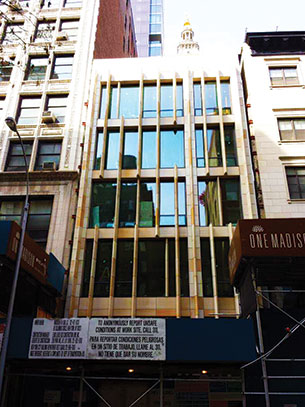
One of the most successful technologies used today to deter rainwater intrusion into a building’s exterior wall and protect its envelope is the rainscreen system. Introduced more than 20 years ago in the United States, rainscreen technology has continued to advance, along with its popularity among building owners who desire a “stylish raincoat” for their structure.
Walls with rainscreen systems tend to be more durable and are less prone to costly repairs resulting from water damage. In addition to managing water infiltration, rainscreen systems are also effective at managing air infiltration, negative wind pressures, heat transfer and vapor transmission into and out of a building. The only real drawback to a rainscreen system is the added cost associated with its more complex design and installation.
Numerous terms have been used in the past to describe rainscreen systems, which has caused some confusion as to what a rainscreen really is. A rainscreen system is the attachment of an outer skin of rear-ventilated cladding to a new or existing building. The system is a form of double-wall construction that uses an outer layer to keep out the rain and an inner layer to provide thermal insulation, prevent excessive air leakage and carry wind loading. Cladding that does not stand off from the wall sheathing to create a cavity is not considered a rainscreen. However, a masonry veneer can be called a rainscreen wall if it is ventilated.
The structural frame of the building is kept absolutely dry, as water never reaches it or the thermal insulation. Evaporation and drainage in the cavity remove water that penetrates between the panel joints.
There are essentially three types of rainscreen systems available on the market today: vented, drained and vented, and pressure equalized.
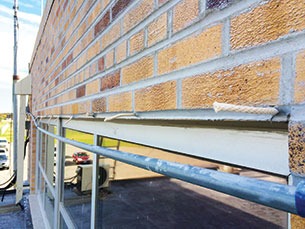
Vented systems. This type of rainscreen cladding system is not recommended for buildings more than four stories high. It utilizes a warm cavity, and no ventilation, and is open only at the bottom. The warm cavity provides a dewpoint similar to the outside, therefore reducing the chance of moisture entering the system.
Drained and vented systems. This type of system is also not recommended for use on buildings more than four stories high, in order to prevent a buildup of condensation. Not watertight, this system requires a cavity opening at the top and bottom that provides drainage and promotes convection ventilation. An overhang is generally used to protect the cavity from the elements.
Pressure-equalized systems. This type of system allows for ventilation openings large enough for air pressure to nearly equalize on both sides of the cladding. The system requires extensive design to balance the amount of air flowing into and out from behind the rainscreen panels.
If a building is located in a relatively wet climate with an average annual rainfall of 60 inches or more, it is a good candidate for a rainscreen system. Conversely, in some cities, a rainscreen system is required by local building codes.
So whether you use a type of repellant, sealant or coating to waterproof a building’s facade, or a rainscreen system, you have taken a giant step forward in protecting that building from preventable structural damage. Always consult with a specialty contractor experienced in waterproofing to recommend the right technology for the job.
Jessica Gitto is business development representative for Western Specialty Contractors.
